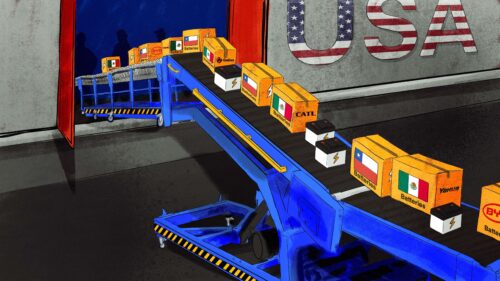China’s secondhand car market is about to take off
A vast number of used cars are coming on the market. With China’s economy slowing down and consumers watching their budgets, secondhand car sales are set to boom.

It’s long been conventional wisdom that consumers in China are averse to secondhand goods. Nowhere has this been truer than in the auto sector: A new car has been the ultimate status symbol since the late 1990s. But this is changing fast thanks to the enormous growth in China’s supply of used cars and a slowing economy.
China currently has about 315 million cars on its roads (including more than 11 million electric vehicles, or EVs) and 461 million licensed car drivers, many of whom will be tightening their purse strings as economic growth continues to stall. Indeed, Cuī Dōngshù 崔东树, secretary-general of the China Passenger Car Association, says the secondhand car market is currently in the stage of “rapid growth,” and the future development potential is “huge.” The China Automobile Dealers Association predicts that the total secondhand car transaction volume will reach 20 million units in 2022, with the fastest growth rates in the fourth quarter (in the first eight months of this year, there were just under 10.5 million transactions).
These numbers are roughly confirmed by data from the Ministry of Public Security, which indicates that there were 15.35 million vehicle transfer registrations in the first three quarters of 2022. The ratio of car transfer registrations (i.e., used-car sales) to new car registrations was 1 to 1.13. (During the same period, a total of 17.4 million passenger cars were newly registered in China.)
Electric indicators
Used electric cars are also selling well: A used-car auction platform called Tiantian Paiche 天天拍车 released a report last week on China’s online used electric vehicle (EV) auction market. The report says that the online transaction volume of used EVs in September increased by 65% year-on-year, while the average online transaction price of EVs increased by 35% year-on-year. The report concludes that the secondhand car market has been boosted by high EV sales in China and the recent high oil prices.
Another used-car platform, Che300.com 车300, reported in September that the used EV transaction volume on its platform from January to August this year was 139,900 units, a year-on-year increase of 94.93%.
Government support for the used-car market
The government is supporting the expansion of the used-car market with a number of new policies, including:
- Effective from October 1: Registered used-car sales companies can apply for the transfer registration of a used car directly to the Ministry of Public Security, which can issue a temporary license plate. This process now only involves one transfer of ownership, not two, thus simplifying the transfer of ownership process and reducing transfer costs.
- Effective from October 1: The number of inspections required for small passenger vehicles over a period of 10 years were reduced from three to two, thus reducing costs for consumers.
- Effective from August 1: Restrictions on the relocation of used cars were lifted, allowing buyers access to used cars all over the country.
- Effective from January 1, 2023: Individuals holding three or more secondhand cars less than one year old will be taxed on each car individually. This will probably mean that a large number of secondhand cars that have been hoarded under the personal names of car dealers will appear on the market.
According to the China Automobile Dealers Association, the average price of a used car in China in August was 65,200 yuan (just over $9,000). According to used-car trading platform Guazi.com, the new policies will collectively save new used-car buyers about 7,000 yuan (almost $1,000), and thus, the company concludes, the coming year “is likely to be the most cost-effective year ever for buying a used car in China.”






